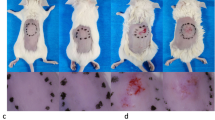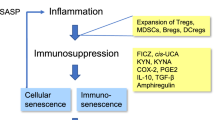Abstract
Papillon–Lefèvre Syndrome is a rare autosomal recessive disorder characterized by rapidly progressive periodontitis and confined palmoplantar hyperkeratosis resulting from genetic mutations in cathepsin C (CTSC). The present study investigated the effect of CTSC on keratinocyte proliferation and apoptosis. HaCaT keratinocytes were transfected with wild-type CTSC and CTSC-targeted siRNAs to investigate the effects of CTSC expression on cell keratosis. Real-time PCR and Western blot analyses showed that the levels of loricrin and keratin (KRT)-1, but not KRT9, was correlated with CTSC expression. Loricrin was increased in the CTSC-overexpression group and downregulated in the CTSC-silenced group. A positive association between loricrin expression and cell apoptosis was detected in HaCaT keratinocytes. KRT1 was decreased in the CTSC-overexpression group and increased in the CTSC-silenced group. Prominent, punctuate KRT1 aggregates were present in CTSC-knockdown HaCaT cells. This study suggested that loss of CTSC contributes to keratinocyte hyperkeratosis via downregulation of loricrin and enhanced cell proliferation.
摘要
牙周破坏掌跖角化综合征是一种常染色体隐性遗传疾病, 其特点是快速进展的牙周炎和掌跖皮肤局限性角化。本研究检测了下调组织蛋白酶C (CTSC) 所引起的角蛋白-1、9和兜甲蛋白在mRNA、蛋白水平表达的变化, 以及对细胞增殖和凋亡的影响。结果表明CTSC过表达时兜甲蛋白表达上调, 同时促进细胞凋亡; CTSC基因沉默后, 兜甲蛋白表达下调, 抑制细胞凋亡, 促进细胞增殖。本研究对了解牙周破坏掌跖角化综合征的致病机制提供了进一步线索。




Similar content being viewed by others
References
Gorlin RJ, Sedano H, Anderson VE (1964) The syndrome of palmar-plantar hyperkeratosis and premature periodontal destruction of the teeth. A clinical and genetic analysis of the Papillon–Lefèvre syndrome. J Pediatr 65:895–908
Fischer J, Blanchet-Bardon C, Prud’homme JF et al (1997) Mapping of Papillon–Lefèvre syndrome to the chromosome 11q14 region. Eur J Hum Genet (EJHG) 5:156–160
Laass MW, Hennies HC, Preis S et al (1997) Localisation of a gene for Papillon–Lefèvre syndrome to chromosome 11q14-q21 by homozygosity mapping. Hum Genet 101:376–382
Hart TC, Hart PS, Bowden DW et al (1999) Mutations of the cathepsin C gene are responsible for Papillon–Lefèvre syndrome. J Med Genet 36:881–887
Toomes C, James J, Wood AJ et al (1999) Loss-of-function mutations in the cathepsin C gene result in periodontal disease and palmoplantar keratosis. Nat Genet 23:421–424
de Haar SF, Jansen DC, Schoenmaker T et al (2004) Loss-of-function mutations in cathepsin C in two families with Papillon–Lefèvre syndrome are associated with deficiency of serine proteinases in PMNs. Hum Mutat 23:524
Meade JL, de Wynter EA, Brett P et al (2006) A family with Papillon–Lefèvre syndrome reveals a requirement for cathepsin C in granzyme B activation and NK cell cytolytic activity. Blood 107:3665–3668
Cook GP (2009) Papillon–Lefèvre syndrome and malignant melanoma. Dermatology 219:187–188
Pilger U, Hennies HC, Truschnegg A et al (2003) Late-onset Papillon–Lefèvre syndrome without alteration of the cathepsin C gene. J Am Acad Dermatol 49:240–243
Stevens HP, Kelsell DP, Bryant SP et al (1996) Linkage of an American pedigree with palmoplantar keratoderma and malignancy (palmoplantar ectodermal dysplasia type III) to 17q24. Literature survey and proposed updated classification of the keratodermas. Arch Dermatol 132:640–651
Reis A, Kuster W, Eckardt R et al (1992) Mapping of a gene for epidermolytic palmoplantar keratoderma to the region of the acidic keratin gene cluster at 17q12-q21. Hum Genet 90:113–116
McLean WH (2003) Genetic disorders of palm skin and nail. J Anat 202:133–141
Reis A, Hennies HC, Langbein L et al (1994) Keratin 9 gene mutations in epidermolytic palmoplantar keratoderma (EPPK). Nat Genet 6:174–179
Hatsell SJ, Eady RA, Wennerstrand L et al (2001) Novel splice site mutation in keratin 1 underlies mild epidermolytic palmoplantar keratoderma in three kindreds. J Invest Dermatol 116:606–609
Whittock NV, Smith FJ, Wan H et al (2002) Frameshift mutation in the V2 domain of human keratin 1 results in striate palmoplantar keratoderma. J Invest Dermatol 118:838–844
Terron-Kwiatkowski A, Paller AS, Compton J et al (2002) Two cases of primarily palmoplantar keratoderma associated with novel mutations in keratin 1. J Invest Dermatol 119:966–971
Terron-Kwiatkowski A, Terrinoni A, Didona B et al (2004) Atypical epidermolytic palmoplantar keratoderma presentation associated with a mutation in the keratin 1 gene. Br J Dermatol 150:1096–1103
Yoneda K, Demitsu T, Manabe M et al (2010) Expression of wild-type, but not mutant, loricrin causes programmed cell death in HaCaT keratinocytes. J Dermatol 37:956–964
Nithya S, Radhika T, Jeddy N (2015) Loricrin—an overview. J Oral Max Pathol (JOMFP) 19:64–68
Ishida-Yamamoto A (2003) Loricrin keratoderma: a novel disease entity characterized by nuclear accumulation of mutant loricrin. J Dermatol 31:3–8
Yang Y, Bai X, Liu H et al (2007) Novel mutations of cathepsin C gene in two Chinese patients with Papillon–Lefèvre syndrome. J Dent Res 86:735–738
Jia LF, Wei SB, Gan YH et al (2014) Expression, regulation and roles of miR-26a and MEG3 in tongue squamous cell carcinoma. Int J Cancer 135:2282–2293
Kosem R, Debeljak M, Repic Lampret B et al (2012) Cathepsin C gene 5′-untranslated region mutation in Papillon–Lefèvre syndrome. Dermatology 225:193–203
Nagy N, Valyi P, Csoma Z et al (2014) CTSC and Papillon–Lefèvre syndrome: detection of recurrent mutations in Hungarian patients, a review of published variants and database update. Mol Genet Genomic Med 2:217–228
Candi E, Schmidt R, Melino G (2005) The cornified envelope: a model of cell death in the skin. Nat Rev Mol Cell Biol 6:328–340
Hamada T, Tsuruta D, Fukuda S et al (2013) How do keratinizing disorders and blistering disorders overlap? Exp Dermatol 22:83–87
Bolling MC, Bladergroen RS, Van Steensel MAM et al (2010) A novel mutation in the L12 domain of keratin 1 is associated with mild epidermolytic ichthyosis. Br J Dermatol 162:875–879
Terron-Kwiatkowski A, van Steensel MA, van Geel M et al (2006) Mutation S233L in the 1B domain of keratin 1 causes epidermolytic palmoplantar keratoderma with “tonotubular” keratin. J Invest Dermatol 126:607–613
Yoneda K, Steinert PM (1993) Overexpression of human loricrin in transgenic mice produces a normal phenotype. Proc Natl Acad Sci USA 90:10754–10758
Jarnik M, de Viragh PA, Scharer E et al (2002) Quasi-normal cornified cell envelopes in loricrin knockout mice imply the existence of a loricrin backup system. J Invest Dermatol 118:102–109
Author information
Authors and Affiliations
Corresponding author
Ethics declarations
Conflict of interest
The authors declare that they have no conflict of interest.
Additional information
Xin Li and Ling-Fei Jia contributed equally to this work.
About this article
Cite this article
Li, X., Jia, LF., Zheng, Y. et al. Loss of cathepsin C enhances keratinocyte proliferation and inhibits apoptosis. Sci. Bull. 61, 1107–1114 (2016). https://doi.org/10.1007/s11434-016-1085-z
Received:
Revised:
Accepted:
Published:
Issue Date:
DOI: https://doi.org/10.1007/s11434-016-1085-z




